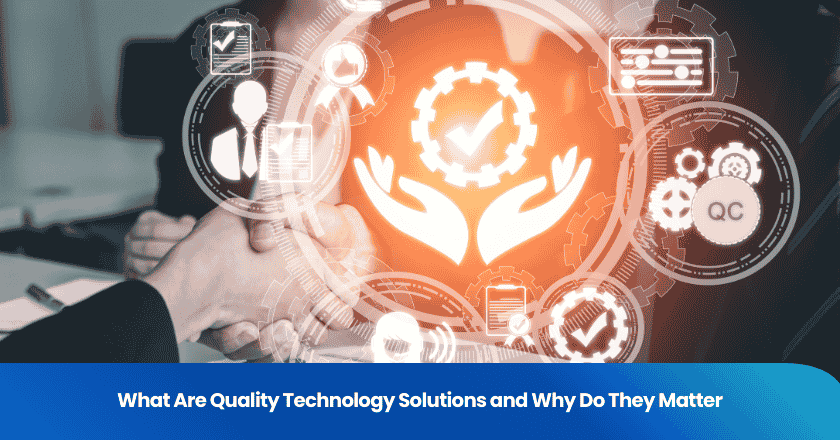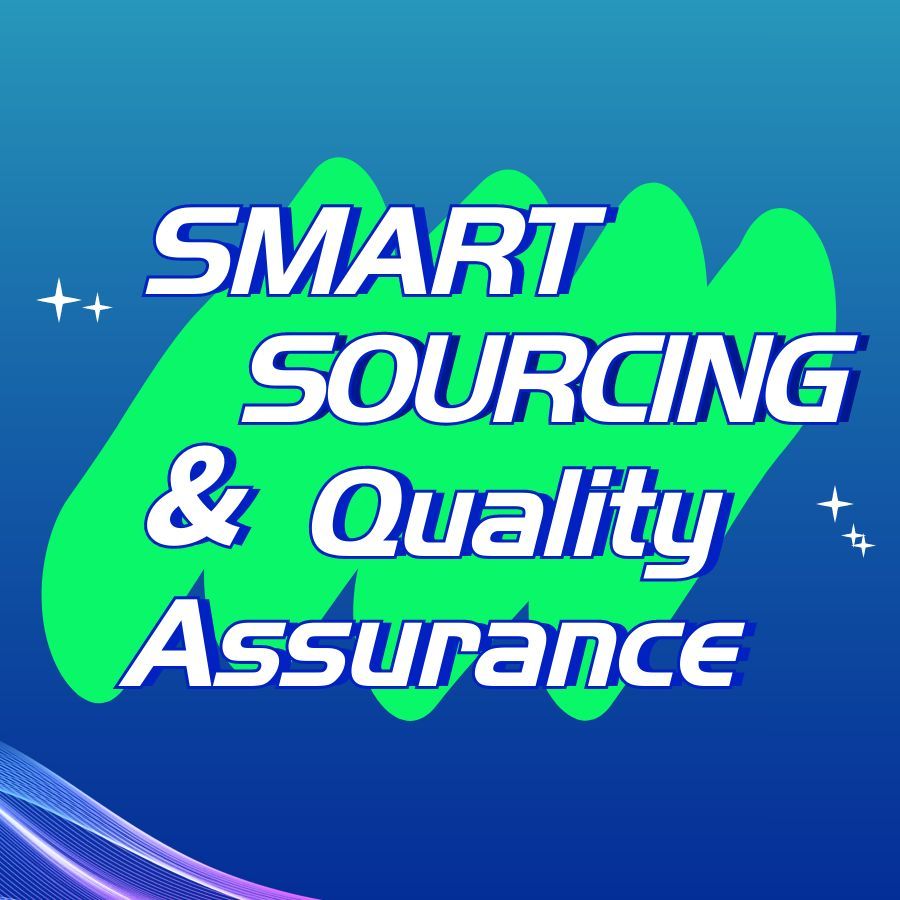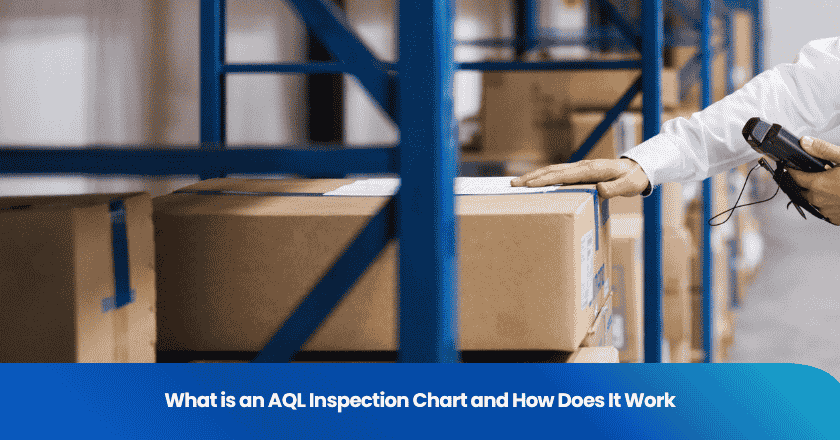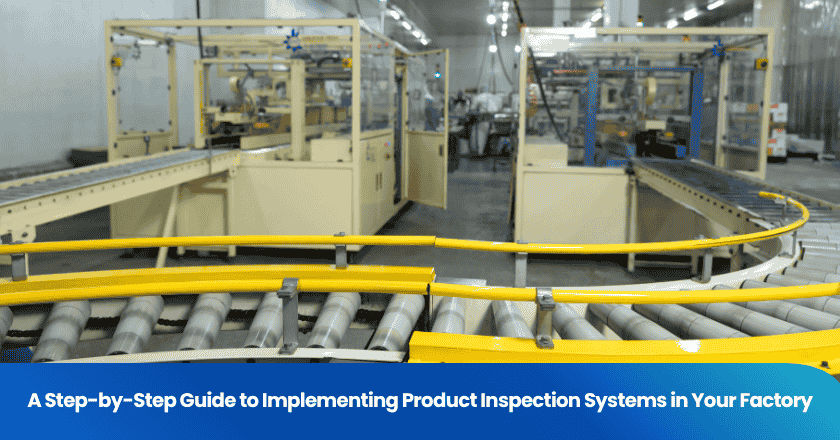
Quality technology solutions use systematic processes to ensure products and services meet strict standards. Quality control, assurance, and management play critical roles in technology by reducing defects and improving consistency. You benefit from reliable products that offer better usability and satisfaction.
- Effective quality assurance processes lead to fewer defects and higher consistency.
- Strong QA and QC investments boost ROI, with some companies achieving up to a 35% increase from reduced rework and higher yield.
- Robust QA improves product reliability and customer satisfaction.
Software quality, reliability, and adaptation to emerging technologies drive sustainable success for you.
Quality Technology Solutions Defined
What Is a Quality Technology Solution
You encounter quality technology solutions when organizations use systematic processes to guarantee products and services meet established standards. These solutions rely on frameworks that guide every stage of development, implementation, and maintenance. International standards, such as ISO 9001, set the foundation for quality management systems. These standards require you to establish, implement, maintain, and improve processes that ensure consistent product and service quality.
Quality technology solutions focus on more than just the final product. You see their impact in planning, control, and continuous improvement. Organizations use quality planning to set standards and metrics. Quality control involves inspection and testing to verify adherence. Testing uncovers bugs and confirms functionality. Inspections and reviews catch defects early. Process standardization creates predictable outcomes. Risk management identifies and reduces threats to software quality.
You benefit from these systematic processes because they reduce errors, improve reliability, and ensure technology solutions perform as expected.
Key Elements
When you evaluate quality technology solutions, you should look for several core elements. Industry experts identify these components as essential for achieving and maintaining high standards:
1. Quality Policy and Objectives
2. Documented Information
3. Process Approach
4. Leadership & Commitment
5. Customer Focus
6. Risk-Based Thinking
7. Performance Evaluation
8. Continuous Improvement
9. Training and Competence
10. Supplier Quality Management
These elements work together to create a robust framework. You see quality policy and objectives guiding every decision. Documented information ensures transparency and accountability. The process approach organizes tasks for efficiency. Leadership and commitment drive the culture of quality. Customer focus keeps your needs at the center. Risk-based thinking helps you anticipate and address potential issues. Performance evaluation measures progress. Continuous improvement encourages adaptation and growth. Training and competence guarantee that teams understand quality standards. Supplier quality management extends these principles to external partners.
Organizations integrate quality management and assurance practices throughout the development of technology solutions. You experience the benefits of end-to-end quality management systems that cover document control, corrective actions, and continuous improvement. Unified platforms allow you to manage multiple quality processes in one place. Seamless data flow and interconnected processes promote efficiency. Cross-functional collaboration brings teams together to solve quality challenges. Real-time visibility provides insights for timely decisions. Regulatory compliance ensures adherence to industry standards. Scalability and flexibility allow solutions to grow with your needs.
You rely on these elements and processes to ensure technology solutions deliver consistent, reliable, and high-performing results. Quality technology solutions empower you to achieve your goals with confidence, knowing that every aspect has been carefully managed and evaluated.
Key Features of Quality Technology Solutions
Reliability
You depend on technology solutions that work consistently and deliver expected results. Reliability stands as a core feature, ensuring systems perform without unexpected failures. Organizations measure reliability by setting clear objectives and matching metrics to specific goals. You see teams define measurable targets and select tools for data collection. Embedding these metrics into daily workflows provides actionable insights.
Reliability testing plays a vital role in the development lifecycle. You benefit when teams integrate testing early, automate tests for efficiency, and monitor results to capture system behavior. Continuous improvement follows insights from testing, fostering a culture where reliability matters. Teams document and share findings to promote best practices.
Common metrics for reliability include customer-reported defect rates, mean time between failures, mean time to repair, error rates, response times, failure rates, and defect density. Software testing, functional testing, and integration testing all contribute to higher reliability. Quality control and assurance serve as foundational pillars, helping you trust that technology solutions will perform as promised.
Reliable technology solutions reduce downtime, minimize disruptions, and build confidence in your daily operations.
Scalability
Scalability ensures your technology solutions can grow with your needs. You expect systems to handle increased workloads, more users, and new features without performance issues. When organizations neglect scalable architecture, they risk revenue losses and damage to reputation. Studies show that 81% of IT decision-makers report lasting brand damage from major outages. Frequent performance issues can lead to up to 21% higher customer churn, affecting long-term stability. Businesses may lose between 8% and 28% of revenue due to delayed user experiences and application slowdowns.
Quality control and assurance help you avoid these risks by identifying bottlenecks early through testing. Software testing uncovers limitations in system capacity and performance. Teams use integration testing to verify that new components work seamlessly with existing systems. You benefit from solutions that adapt to emerging technologies and scale efficiently.
Scalable technology solutions support your growth, maintain performance, and protect your reputation.
User-Centric Design
User-centric design places your needs at the center of technology development. You experience intuitive interfaces, accessible features, and products tailored to your preferences. User testing is essential in this process. Teams identify potential issues in user interaction early, which enhances the quality and user-friendliness of the final product.
You see organizations engage users in workshops and focus groups, especially older adults, to gather feedback. This approach ensures technology solutions remain accessible and intuitive. Teams refine products based on user input, meeting specific needs and improving satisfaction.
Quality assurance and software testing validate usability across devices and platforms. Functional testing confirms that features work as intended. You benefit from technology solutions that prioritize your experience and adapt to changing expectations.
Security and Compliance
Security and compliance protect your data and ensure technology solutions meet regulatory requirements. You rely on systems that safeguard sensitive information and follow industry standards. Common standards include GDPR, HIPAA, SOX, PCI DSS, GLBA, and FISMA. Adhering to these regulations reduces legal risks and enhances reputation.
Quality control and assurance identify vulnerabilities early through rigorous testing. Software testing uncovers security gaps and verifies compliance with standards. Integration testing ensures that security features work across different system components. You gain confidence knowing your technology solutions protect your interests and adapt to new threats.
Secure and compliant technology solutions build trust, reduce risk, and support long-term success.
Quality technology solutions combine reliability, scalability, user-centric design, and security with strong quality control and assurance. You benefit from systems that adapt to emerging technologies, deliver consistent performance, and meet your evolving needs.
Quality Control in Technology
Role of Quality Control
You rely on quality control to ensure technology solutions meet your expectations and comply with industry standards. Quality control acts as a safeguard, catching issues before they reach you. This process involves regular inspections, monitoring, and the testing and validation process at every stage of development. By focusing on defect prevention, you help your organization avoid costly mistakes and maintain a strong reputation.
Quality control brings several advantages to your technology projects:
- It ensures the final product meets customer expectations and regulatory requirements.
- High-quality products build your brand reputation and foster customer loyalty, which is essential for long-term success.
- Adhering to industry standards helps you avoid costly recalls, penalties, and legal consequences.
- Identifying defects early in the process minimizes the cost of rework or scrapped materials, leading to significant cost savings.
- Investing in prevention and appraisal costs reduces both internal and external failure costs, making your organization more competitive.
- Companies that focus on prevention strategies see better financial returns than those relying only on inspection.
- Continuous improvement, driven by quality control, enhances product quality and increases customer satisfaction over time.
Benefits for Organizations
When you implement a robust quality control process, you optimize your operations and boost your competitiveness. Quality control and cost improvement go hand in hand. Higher quality standards lead to lower operational costs. By minimizing defects, you reduce the need for expensive rework, which directly contributes to cost savings. Many organizations launch projects specifically to reduce quality costs, showing a strategic approach to increasing project value.
You also see clear process improvements when you prioritize quality control. The table below highlights key areas where organizations benefit:
| Improvement Category | Description |
|---|---|
| Product And Service Quality | Significant reductions in defect rates and increased consistency in outputs. |
| Customer Satisfaction And Loyalty | Higher customer retention rates and increased referral business due to consistent product quality. |
| Operational Cost Reduction | Cost savings from reduced waste, lower material costs, and improved resource utilization. |
| Brand Value Enhancement | Strengthened brand reputation leading to premium pricing and competitive advantages. |
| Regulatory Compliance Benefits | Improved compliance with industry regulations, reducing audit findings and penalties. |
By embedding quality control into your daily operations, you create a culture of excellence. You gain the confidence that your technology solutions will perform reliably, meet compliance needs, and deliver value to your customers.
Why Quality Matters
Business Impact
You gain measurable advantages when you invest in quality technology solutions. These solutions drive increased efficiency by automating routine tasks and freeing up your team for strategic work. You see improved decision-making because real-time analytics provide actionable insights. Quality assurance in software development ensures high standards, which leads to fewer defects and better outcomes. Operational excellence streamlines your processes, minimizes waste, and optimizes resource allocation. This approach lowers costs and boosts profitability. You also benefit from innovation and scalability, which support long-term growth.
You notice that quality technology solutions strengthen your brand reputation. Consistent delivery and reliable performance build trust with your customers. When you maintain high standards in software development, you create opportunities for premium pricing and greater market share. The integration of analytics and security features further enhances your brand reputation by providing safe, personalized experiences.
- Quality assurance and operational excellence drive revenue growth.
- Streamlined processes and optimized resources increase profitability.
- Innovation and scalability foster long-term business success.
Customer Satisfaction
You experience higher satisfaction when technology solutions prioritize your needs. User-centric design and integrated analytics personalize your interactions, making every touchpoint smooth and intuitive. Advanced security features protect your data, increasing your trust in the system. Fast service and accurate transactions contribute to customer satisfaction, which leads to repeat business and positive word-of-mouth.
You rely on software development teams to deliver solutions that meet your expectations. Quality features such as operational analytics and security analytics optimize resource allocation and reduce false alerts, creating a safer and more efficient environment. These improvements reinforce your brand reputation and ensure you remain loyal to the service.
Quality technology solutions create a cycle of increased efficiency, customer satisfaction, and enhanced brand reputation. You benefit from reliable, secure, and user-friendly experiences that support your goals.
Identify Quality Solutions
Evaluation Criteria
You need clear criteria to evaluate the quality of technology solutions. Effective evaluation starts with unambiguous standards that align with your objectives. You should focus on criteria that are easy to understand, relevant to your goals, and measurable for comparison. Adaptability matters because your needs may change over time. Balance ensures that no single factor dominates your decision-making process.
| Component | Description |
|---|---|
| Clarity | Criteria remain straightforward and easy for you to interpret. |
| Relevance | Each criterion supports your overall evaluation objectives. |
| Measurability | You can quantify results for accurate comparison. |
| Adaptability | Criteria adjust as your objectives evolve. |
| Balance | No single aspect outweighs others in your assessment. |
You should apply these criteria throughout the development and implementation of technology solutions. Quality management systems help you maintain consistency and transparency. You benefit from quality assurance controls that support ongoing evaluation and improvement.
Implementation Steps
You can follow a structured approach to implement quality technology solutions. Start by aligning technology investments with your business goals. Collaboration between IT and business teams helps you set clear objectives and key performance indicators. Prioritize employee training so your team can use new technology effectively.
1. Align technology with your strategic goals.
2. Foster collaboration across teams to set clear KPIs.
3. Make employee training a top priority.
You should use the ISOC methodology: Initialize, Stabilize, Optimize, and Capitalize. This approach guides you through each stage of technology adoption and change management. Quality assurance processes play a vital role in every step, from initial planning to ongoing monitoring.
Continuous improvement is essential after implementation. You need ongoing support, including help desk services and system monitoring. Quality assurance in software development ensures data reliability and system optimization. You should monitor performance, analyze feedback, and make incremental changes to enhance efficiency and quality. Quality management practices encourage you to standardize successful improvements into daily operations.
Tip: Adopt a systematic approach to continuous improvement. Small, manageable changes can lead to significant advancements in technology development and quality management systems.
You rely on quality assurance, quality management, and quality management systems to maintain high standards throughout the development lifecycle. Ongoing assessment and improvement ensure your technology solutions remain effective and reliable.
You gain a competitive edge when you prioritize quality in technology solutions. Quality control, assurance, and management drive continuous improvement and customer loyalty. Consider the following key statistics:
| Statistic | Description |
|---|---|
| 60% | Organizations view AI as vital for data programs. |
| 12% | Believe their data quality supports effective AI. |
| 57% | Professionals face poor data quality challenges. |
Apply clear criteria and structured steps to select solutions that fit your needs. Embrace ongoing improvement and adapt your strategies as new technologies emerge. This approach ensures you deliver reliable, secure, and innovative results.
FAQ
What is the difference between software and hardware in quality technology solutions?
Software refers to programs and applications you use on devices. Hardware includes physical components like processors and memory. You need both to achieve high product quality. Quality control ensures software runs smoothly and hardware performs reliably.
How does quality control improve software and hardware reliability?
Quality control uses testing and inspection to find defects in software and hardware. You benefit from fewer failures and better performance. Teams monitor systems, run diagnostics, and fix issues quickly. This process increases reliability and supports consistent product quality.
Why is software testing important for quality control?
Software testing helps you identify bugs and security risks before release. Quality control teams use automated and manual tests to check software functions. You see improved stability, fewer errors, and better user experiences. Testing supports compliance and protects your data.
What role does hardware play in software performance?
Hardware provides the foundation for software operations. You need fast processors, enough memory, and reliable storage. Quality control checks hardware for faults. When hardware works well, software runs efficiently, and you experience fewer disruptions.
How do you maintain product quality in technology solutions?
You use quality control to monitor software and hardware throughout their lifecycle. Regular updates, inspections, and feedback help you catch problems early. Teams analyze data, improve processes, and ensure product quality meets your expectations.
Tip: Always update your software and hardware to maintain high quality and security.
Grow your business with TradeAider Service
Click the button below to directly enter the TradeAider Service System. The simple steps from booking and payment to receiving reports are easy to operate.




